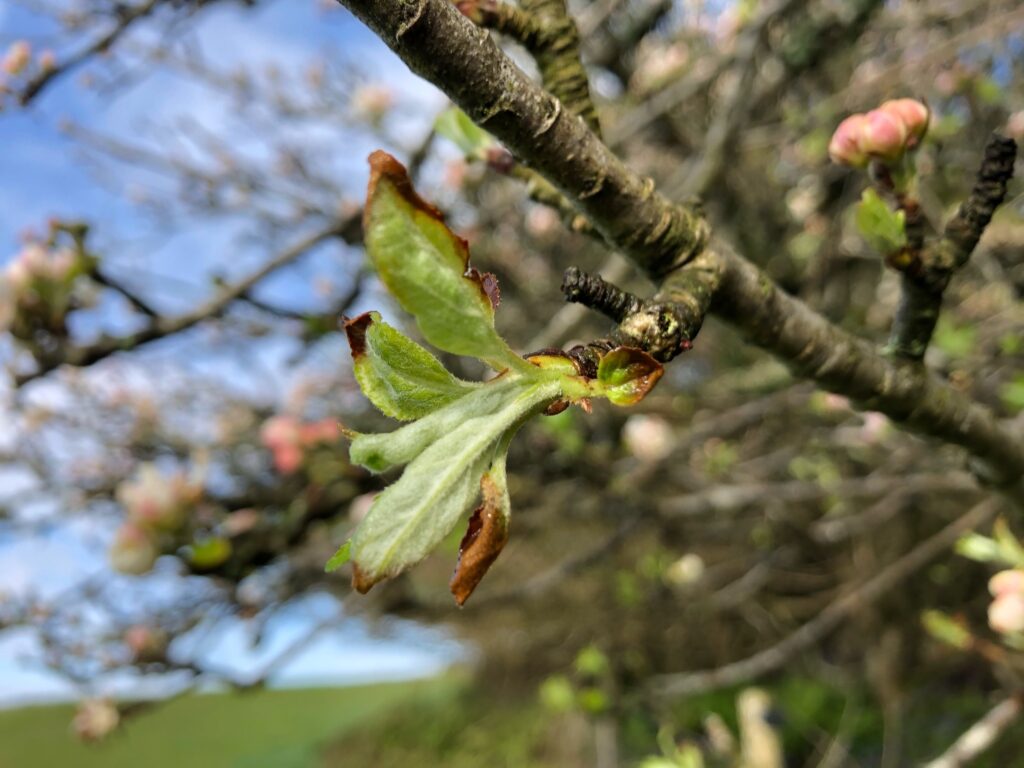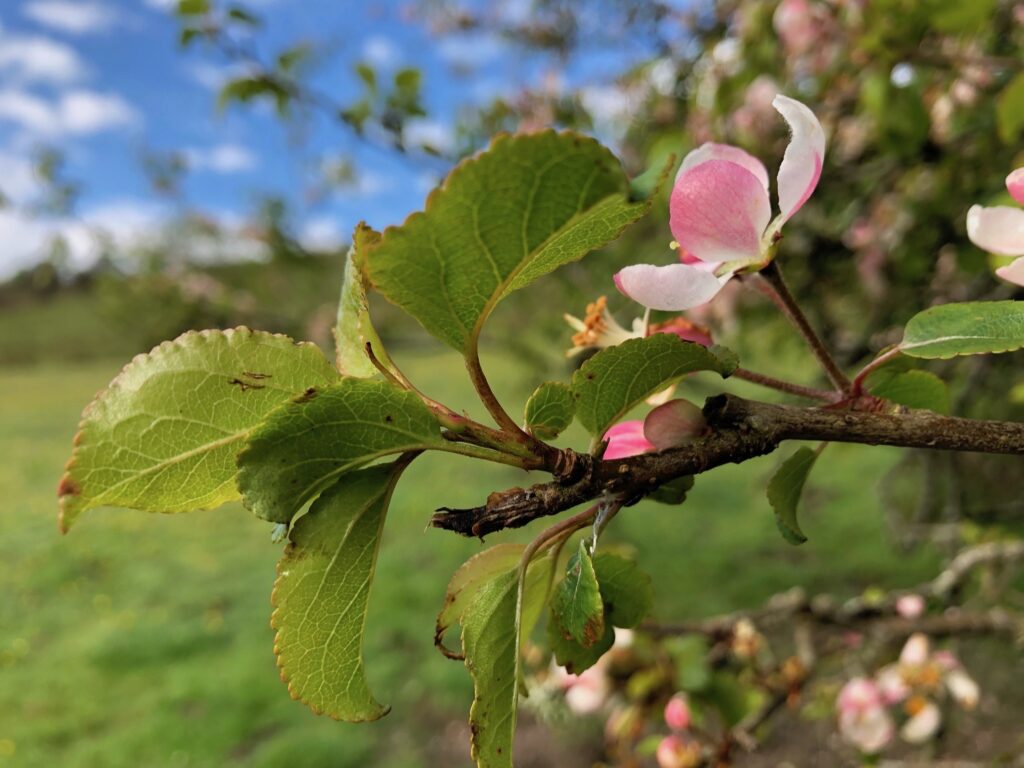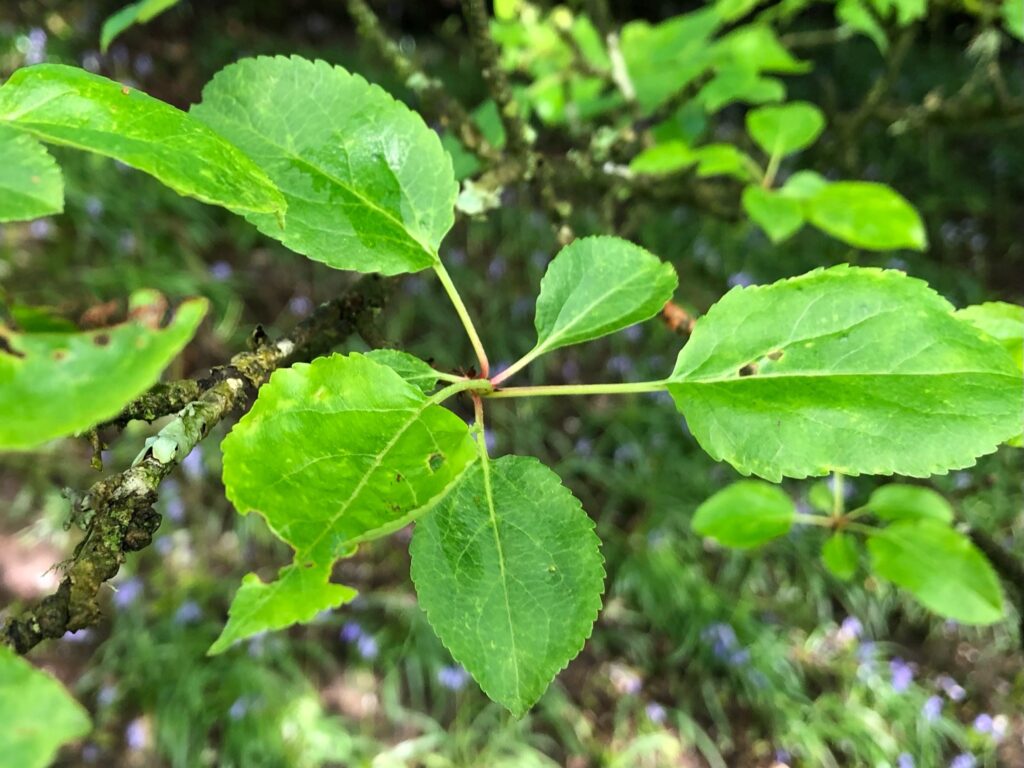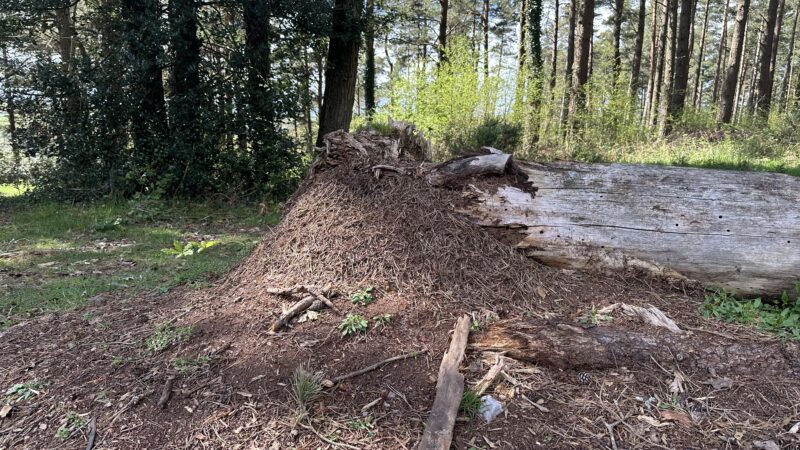Where the wild apple grows

Bursts of candy pink along the hedgerow mark the apple trees, blossoming in sugar clouds despite the beating rain. Twice a year these apples catch my eye – now when they are in bloom, and again in late autumn when their yellow and red fruits cluster on bare branches. They grow on an old hedgebank, twisted in among oak, holly and hawthorn, pushing up perhaps eight metres high. These are self-set trees, no one planted them. But what are they exactly? Seedlings from cores tossed aside by walkers? Crab apples? Or something else?
Broadly speaking, Britain has three main apple types. Wild apple (Malus sylvestris) has grown here since the end of the last ice age. Its small, hard, sour fruits were used for feeding pigs and making verjuice – a type of sharp vinegar. Around 2,000 years ago the domestic apple (M domestica) arrived. It is a hybrid of a sweet Asian species (M sieversii), a Caucasian crab apple and M sylvestris. Then there are ornamental crab apples, the kind sold in garden centres. These are mixtures of Asian and American species, interbred with domestic apples.
Wild apple produces masses of fruit and is incredibly resilient – the researchers Richard Worrell, Markus Ruhsam and James Renny of the Northern Apple Project found one growing on an otherwise treeless, windswept sea cliff in Shetland. Apples love to hybridise, and the wild strain mixes easily with domesticated varieties of all kinds, meaning non-hybrids are rare. Foliage is a good identification guide – sylvestris has shiny, hairless leaves, while hybrids have downy hairs all over the leaves and stems.


Close inspection of the Chardown trees reveals that two have smooth leaves, but faintly hairy stalks – these look very like wild apples, but only DNA analysis could tell for sure. A venerable grey, gnarled tree that I always thought was wild has leaves covered in felted fuzz, showing it to be a definite hybrid, possibly even a seedling from a domestic apple pip. But the last tree, standing away from the hedge in a patch of field scrub, has stiff, hairless leaves, more like a cherry. In autumn it produces tiny, golden, rot-resistant fruits that last into late winter. Taken together, these leaf and fruit characteristics indicate that it probably is M sylvestris, a true wild apple.

First published in The Guardian’s Country Diary column 3 June 2021.





